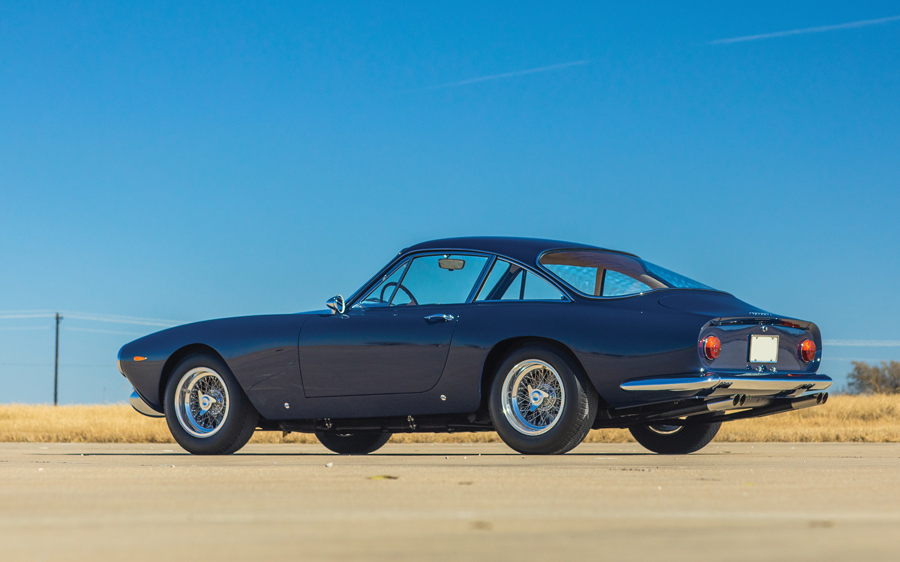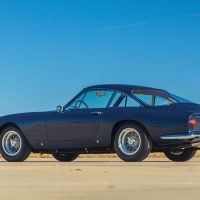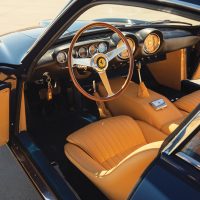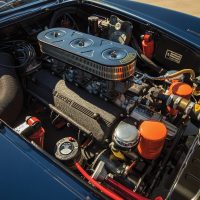SCM Analysis
Detailing
| Vehicle: | 1963 Ferrari 250 GT/L Lusso Berlinetta |
| Years Produced: | 1962–64 |
| Number Produced: | 350 |
| Original List Price: | $13,375 |
| SCM Valuation: | $1,402,500 |
| Tune Up Cost: | $3,000 |
| Distributor Caps: | $200 for a reproduction. Two are required |
| Chassis Number Location: | Stamped on the passenger’s side frame rail next to the engine |
| Engine Number Location: | Stamped on a flange on the rear passenger’s side of block |
| Club Info: | Ferrari Club of America |
| Website: | http://www.FerrariClubofAmerica.org |
| Alternatives: | 1974 Iso Grifo, 1957 Mercedes-Benz 300SL Gullwing, 1992 Ferrari F40, 1964 Lamborghini 350GT |
| Investment Grade: | B |
This car, Lot 236, sold for $1,600,000, including buyer’s premium, at RM Sotheby’s Amelia Island Auction on March 6–7, 2020.
Allan Pray was like many of the other early Ferrari enthusiasts. He grew up as exotic foreign automobiles were gaining a toehold in the United States. Like many other men of the era, he became infatuated with the cars. Fortunately, a career overseeing scheduling and aircraft procurement for Northwest Airlines put him in a position where he could own many of the cars he admired.
Tim Keseluk’s business, Vintage and Exotic Cars, worked on some of Mr. Pray’s cars. Keseluk said that through his life, Pray owned several Prancing Horses — as well as special cars from other marques.
Pray’s obsession with cars was notable enough that his obituary listed his “lifelong passion for automobiles” as one of two avocations. The other was spending summers aboard his yacht on the French Riviera. He sounds like a guy we would have liked.
One of Pray’s favorite cars was his 1963 Ferrari 250 GT/L Lusso — our subject car. He bought the car in 1972 before the car was 10 years old. He kept it the rest of his life, which would be 44 more years.
In our age of CARFAX, paint meters and other tests of automotive purity, it’s interesting to note that, according to Ferrari historian Marcel Massini, Mr. Pray’s nine-year-old Lusso had already been refinished from its original green with beige interior to red with a black interior before he bought the car.
The chrome had been replated and the wire wheels had been replaced — as was the exhaust system. All this was done on a car that was less than 10 years old.
Years ago, Lussos were just used cars
While the early modifications might doom Mr. Pray’s Lusso to untouchable status by today’s standards, all this was not unusual at the time.
A 1982 letter to the editor of the Ferrari Club of America’s Prancing Horse magazine chronicled the purchase and resuscitation of a 19-year-old Lusso.
The Prancing Horse writer described his Lusso as having faded and cracked dark blue paint, corroded wheels and a motor that smoked, leaked and ran erratically. It’s hard to imagine a Lusso in this condition today, but many were far from creampuffs 40 years ago.
A 1966 Road & Track article titled “So You’d Like to Own a Ferrari” told the story of a man’s experience with a 1960 Ferrari.
The car would have been just five years old when the article was written. The man said the speedometer reading was dubious, and the engine smoked a little. Then he changed that to “it smoked a lot.” Some instruments didn’t work, the clock was inoperative, the cigarette lighter was also dead and the engine leaked “like a tennis racket.” Several spokes in the rear wheel were broken, the spare wheel was bent, and the bottom of the trunk compartment was rusted.
You get the idea.
Concours-quality restoration
I don’t know what condition Mr. Pray’s Lusso was in when he got it. I do know that before the car was 20 years old, Mr. Pray had it repainted again, the upholstery replaced and the engine overhauled.
That’s two paint jobs, two new interiors, and an engine rebuild on a car that was less than 20 years old.
Lusso values were over $500,000 by the late 2000s — and moving up.
By then, Mr. Pray’s Lusso had another 25 or so years on the last spruce-up repaint.
It suddenly made economic sense to give the car a concours-level restoration. Bob Smith Coachworks was wisely chosen for the job. The Ferrari experts at the shop produced a Cavallino Classic Platinum award winner, which certified the work as world class.
Pray’s Lusso remained with his family after his 2016 death.
Selling at the high estimate
The car’s $1,600,000 sale at Amelia Island was at the high end of RM Sotheby’s $1,300,000–$1,600,000 estimate.
High market for Lussos was in 2014, where $2 million-plus sales were the norm. A $3.1 million sale in 2014 still holds the auction record. 2015 saw prices slide to under $2 million. 2019 sales ranged from under $1.2 million to over $1.9 million.
It’s not hard to spend $500,000 restoring a scruffy Lusso, so a wide range of Lusso values is normal.
One of the best shops in the United States restored Pray’s Lusso. Cavallino Classic Platinum awards proved the work. The car had a known history and came with books and tools. The buyer had to pay up for it — but got what he/she paid for.
The new owners will not regret the purchase.
Where the market is now
Like most other SCM contributors, I wrote this while sheltered in place.
Like everyone else, I’m still in a bit in shock over what’s happened over the past couple weeks. In the middle of February, we were looking at a record stock market and digesting relatively strong Scottsdale Auction Week results. Just two weeks later, there was serious concern over even holding the Amelia Island events, which I suspect would have been canceled had they fallen just a week later.
Bring a Trailer has been my market barometer lately.
I haven’t been watching the prices as much as the sales percentage. RM Sotheby’s online-only Palm Beach auction has been going on as I’ve been writing, which has also been insightful.
The BaT sales percentage has stayed relatively constant, which indicates cars are selling. The RM sale had to go online when the virus hit. As expected, there have been a lot of no-sales, but I’ve been impressed with some mid- and over-estimate sales.
The show must go on, and for now if you have what the buyer wants, you can still sell it. ♦
(Introductory description courtesy of RM Sothebys.)




